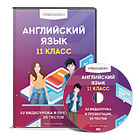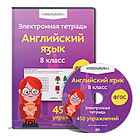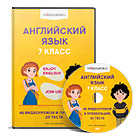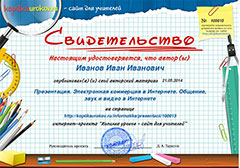Quiz II. The United Kingdom of Great Britain
and Northern Ireland
1. The United Kingdom consists of __________
(A) England, Scotland, Wales.
(B) Great Britain and Northern Ireland.
(C) England and Scotland.
(D) Great Britain and the Irish Republic.
2. Great Britain includes __________
(A) England, Scotland, Wales.
(B) England and Scotland.
(C) England and Wales.
(D) England and Ireland.
3. Who is the head of the state in the UK?
(A) The Prime Minister
(B) The Lord Chancellor
(C) The Monarch
(D) The Speaker
4. Who is the head of the government in the UK?
(A) The Monarch
(B) The Speaker
(C) The Lord Chancellor
(D) The Prime Minister
5. The Monarch of the UK __________
(A) rules and governs.
(B) reigns but does not rule.
(C) reigns and rules.
(D) rules but does not reign.
6. The British monarchs are crowned in __________
(A) Westminster Abbey.
(B) St. Paul’s Cathedral.
(C) the Tower.
(D) Buckingham Palace.
7. The motto of the UK is __________
(A) “God and My Right”.
(B) “God Save the Queen”.
(C) “Land and My Fathers”.
(D) “In God We Trust”.
8. How many independent countries are there on the British Isles?
(A) 1
(B) 2
(C) 3
(D) 4
9. Which of the following is the royal residence?
(A) Westminster Palace
(B) Buckingham Palace
(C) The Tower
(D) Whitehall
10. What is the noble title of the British monarch’s eldest son?
(A) The Prince Royal
(B) The Duke of York
(C) The Duke of Edinburgh
(D) The Prince of Wales
11. The first woman prime minister in Britain was __________
(A) Margaret Drabbe.
(B) Elizabeth II.
(C) Margaret Thatcher.
(D) Charlotte Brontѐ.
12. Who elects the members of the House of Commons?
(A) The Monarch
(B) The Prime Minister
(C) Electors
(D) The House of Lords
- 5 -
13. In the UK, parliamentary elections are held __________
(A) once in three years.
(B) once in four years.
(C) once in five years.
(D) once in six years.
14. What bird is the national bird of the UK?
(A) The blackbird
(B) The sparrow
(C) Robin Redbreast
(D) The starling
15. Who is the patron of England?
(A) St. Patrick
(B) St. George
(C) St. Andrew
(D) St. David
16. St. Patrick is the patron of __________
(A) England.
(B) Scotland.
(C) Ireland.
(D) Wales.
17. Which part of the UK is not represented in the Union Jack?
(A) Scotland
(B) Wales
(C) England
(D) Northern Ireland
18. What is the symbol of the pound of sterling?
(A) $
(B) £
(C) ¥
(D) €
19. Who were the most ancient inhabitants on the British Isles?
(A) The Romans
(B) The Celts
(C) The Anglo-Saxons
(D) The Normans
20. Llyn-Din means __________
(A) a lonely port.
(B) a white land.
- 6 -
(C) a foggy place.
(D) a picturesque settlement.
21. Julius Caesar came from Rome to the British Isles in __________
(A) 55 B.C.
(B) 43 B.C.
(C) 43 A.D.
(D) 55 A.D.
22. Who came to the British Isles after the Romans had left Britain?
(A) The Normans
(B) The Anglo-Saxons
(C) The Britons
(D) The Danes
23. Who gave England its name “Angle land”?
(A) The Celts
(B) The Germanic tribes
(C) The Romans
(D) The Normans
24. The Anglo-Saxons were __________
(A) Celtic inhabitants.
(B) Germanic tribes.
(C) Roman invaders.
(D) Scandinavian vikings.
25. The Normans conquered England in __________
(A) 55 B.C.
(B) 43 A.D.
(C) 410 A.D.
(D) 1066.
26. Who was the first king to be crowned in Westminster Abbey?
(A) King Arthur
(B) King Alfred
(C) Henry VIII
(D) William the Conqueror
27. The British Parliament has had two houses since __________
(A) 1215.
(B) 1265.
(C) 1301.
(D) 1536.
- 7 -
28. Which language influenced English greatly?
(A) Latin
(B) German
(C) French
(D) All of them
29. What misfortune fell upon London in 1666?
(A) The Great Flood
(B) The Plague
(C) The Great Fire
(D) The Great Depression
30. England and Scotland were united as the Kingdom of Great
Britain in __________
(A) 1301.
(B) 1536.
(C) 1660.
(D) 1707.
31. The country was called the United Kingdom of Great
Britain and Northern Ireland in __________
(A) 1707.
(B) 1801.
(C) 1922.
(D) 1931.
32. The British Empire stopped existing in __________
(A) the 1920s.
(B) the 1930s.
(C) the 1940s.
(D) the 1950s.
33. The 6th of June 1944 is called __________
(A) V-Day (Victory Day).
(B) D-Day (an important day).
(C) L-Day (Labour Day).
(D) C-Day (Constitution Day).
34. Trafalgar is __________
(A) a cape.
(B) a town.
(C) a square.
(D) a bay.
- 8 -
35. England consists of __________
(A) 9 districts.
(B) 9 states.
(C) 9 counties.
(D) 9 regions.
36. How many lakes are there in the Lake District?
(A) 6
(B) 10
(C) 16
(D) 20
37. What is the highest mountain in the United Kingdom?
(A) Ben Nevis
(B) Snowdon
(C) The Mourne Mountain
(D) The Pennine Chain
38. What is known as the “backbone” of England?
(A) The Highlands
(B) The Cheviot Hills
(C) The Southern Uplands
(D) The Pennine Chain
39. What separates England from Scotland?
(A) The Cheviots
(B) The Pennines
(C) The Thames
(D) The Severn
40. Which river is the longest in Britain?
(A) The Thames
(B) The Severn
(C) The Avon
(D) The Tweed
41. Loch Ness is __________
(A) a person.
(B) a lake.
(C) a valley.
(D) a river.
42. Which is Scotland’s biggest city?
(A) Edinburgh
(B) Glasgow
- 9 -
(C) Liverpool
(D) Aberdeen
43. On the Welsh flag, we can see __________
(A) three crosses.
(B) a lion.
(C) a dragon.
(D) a daffodil.
44. What is the capital of Wales?
(A) London
(B) Edinburgh
(C) Cardiff
(D) Belfast
45. What is the historical name of Northern Ireland?
(A) Ulster
(B) The Irish Republic
(C) The Republic of Eire
(D) The Emerald Isle
46. What is the capital of Northern Ireland?
(A) Dublin
(B) Belfast
(C) Cardiff
(D) Edinburgh
47. On St. David’s Day, Welshmen wore __________
(A) a rose or a daffodil.
(B) a shamrock or a leek.
(C) a leek or a daffodil.
(D) a thistle or a rose.
48. Greater London is __________
(A) a part of London.
(B) the official name of the city.
(C) the counties around London.
(D) the city and the areas around it.
49. Which part of London is the heart of its business and commercial life?
(A) The City
(B) The East End
(C) The West End
(D) Westminster
- 10 -
50. What monument is in the centre of Trafalgar Square?
(A) The Statue of Eros
(B) Nelson’s Column
(C) The Monument to Queen Victoria
(D) Peter Pan Statue
51. What is the name of the most famous clock in Britain?
(A) Big Clock
(B) Big John
(C) Big Apple
(D) Big Ben
52. What London street is known as the centre of journalism?
(A) Leicester Square
(B) Piccadilly Circus
(C) Fleet Street
(D) Bond Street
53. The Speakers’ Corner is in __________
(A) Kensington Gardens.
(B) St. James’s Park.
(C) Hyde Park.
(D) the House of Commons.
54. The Tate Gallery is named after __________
(A) the city it is in.
(B) the street it is in.
(C) its founder.
(D) its sponsor.
55. What is the emblem of the world famous Edinburgh Festival of Music and
Drama?
(A) The poppy
(B) The daffodil
(C) The thistle
(D) The leek
56. Eisteddfod is the festival of __________ culture.
(A) Welsh
(B) Scottish
(C) Irish
(D) English
57. The public school is __________
(A) a comprehensive school for bright children in which the tuition is free.
- 11 -
(B) a specialized school for talented children in which the tuition fee is quite
low.
(C) a private school for privileged children in which the tuition fee is very
high.
(D) a common boarding school for all children.
58. Common Entrance is associated with __________
(A) a primary school.
(B) a secondary school.
(C) a public school.
(D) all of the above.
59. Which name does not fit the list?
(A) Eton
(B) Harrow
(C) Rugby
(D) Sussex
60. What is the student quarter in London?
(A) Westminster
(B) The City
(C) Bloomsbury
(D) Latin Quarter
61. How many universities and colleges are there in Great Britain?
(A) total 10
(B) total 100
(C) total 1000
(D) not known
62. Which sport is not originated in the UK?
(A) Football
(B) Tennis
(C) Golf
(D) Horse racing
63. Wimbledon is associated with __________
(A) horse racing.
(B) soccer.
(C) tennis.
(D) cricket.
64. The nickname of the Liberal Party is __________
(A) the Whigs.
(B) the Tories.
- 12 -
(C) the Elephants.
(D) the Liberals.
65. Cockney is __________
(A) bookish English.
(B) plain English.
(C) spoken English.
(D) illiterate English.
66. Which prefix is used in Scottish family names?
(A) O’…
(B) Mac…
(C) Gil…
(D) Fitz…
67. The kilt is __________
(A) an English hat.
(B) a Scottish skirt.
(C) an Irish coat.
(D) a kind of Welsh trousers.
68. The limerick is __________
(A) a song.
(B) a game.
(C) a poem.
(D) a dance.
69. The limerick is named after __________
(A) the person who invented it.
(B) the pub where it was first introduced.
(C) the town in which it was created.
(D) the genre it belongs to.
70. Madame Tussaud’s is __________ in London.
(A) a circus
(B) a theatre
(C) a museum
(D) an art gallery
71. Guy Fawkes is __________
(A) a famous historian.
(B) a national hero of Britain.
(C) an English poet.
(D) the man who wanted to set fire to the British Parliament.
- 13 -
72. Englishmen eat their dinner at __________
(A) 12 a.m.
(B) 2 p.m.
(C) 6 p.m.
(D) 8 p.m.
73. Which of the following holidays is not a bank holiday in the UK?
(A) Christmas Day
(B) St. Patrick’s Day
(C) Easter Monday
(D) Boxing Day
74. Who were King Arthur’s companions?
(A) Merry men
(B) The Knights of the Round Table
(C) Legendary heroes
(D) Common warriors
75. Which of the names does not fit the list?
(A) William Blake
(B) William Wordsworth
(C) William Shakespeare
(D) William Byrd
76. Which name is inappropriate for the list?
(A) Jonathan Swift
(B) Oscar Wilde
(C) Benjamin Britten
(D) Daniel Defoe
77. Which of the names differs from the rest?
(A) Walter Scott
(B) Arthur Conan Doyle
(C) Robert Stevenson
(D) George Bernard Shaw
78. Which of the names is different from the rest?
(A) Christopher Wren
(B) Joshua Reynolds
(C) Thomas Gainsborough
(D) John Constable
79. Which of the following names is not appropriate for the list?
(A) James Maxwell
(B) Henry Cavendish
- 14 -
(C) Charles Darwin
(D) Thomas Moore
80. George Berkeley, Jeremy Bentham, Adam Smith were __________
(A) British philosophers.
(B) British inventors.
(C) British composers.
(D) British painters.
Просмотр содержимого документа
«Тест по страноведению»
Quiz II. The United Kingdom of Great Britain
and Northern Ireland
1. The United Kingdom consists of __________
(A) England, Scotland, Wales.
(B) Great Britain and Northern Ireland.
(C) England and Scotland.
(D) Great Britain and the Irish Republic.
2. Great Britain includes __________
(A) England, Scotland, Wales.
(B) England and Scotland.
(C) England and Wales.
(D) England and Ireland.
3. Who is the head of the state in the UK?
(A) The Prime Minister
(B) The Lord Chancellor
(C) The Monarch
(D) The Speaker
4. Who is the head of the government in the UK?
(A) The Monarch
(B) The Speaker
(C) The Lord Chancellor
(D) The Prime Minister
5. The Monarch of the UK __________
(A) rules and governs.
(B) reigns but does not rule.
(C) reigns and rules.
(D) rules but does not reign.
6. The British monarchs are crowned in __________
(A) Westminster Abbey.
(B) St. Paul’s Cathedral.
(C) the Tower.
(D) Buckingham Palace.
7. The motto of the UK is __________
(A) “God and My Right”.
(B) “God Save the Queen”.
(C) “Land and My Fathers”.
(D) “In God We Trust”.
8. How many independent countries are there on the British Isles?
(A) 1
(B) 2
(C) 3
(D) 4
9. Which of the following is the royal residence?
(A) Westminster Palace
(B) Buckingham Palace
(C) The Tower
(D) Whitehall
10. What is the noble title of the British monarch’s eldest son?
(A) The Prince Royal
(B) The Duke of York
(C) The Duke of Edinburgh
(D) The Prince of Wales
11. The first woman prime minister in Britain was __________
(A) Margaret Drabbe.
(B) Elizabeth II.
(C) Margaret Thatcher.
(D) Charlotte Brontѐ.
12. Who elects the members of the House of Commons?
(A) The Monarch
(B) The Prime Minister
(C) Electors
(D) The House of Lords
- 5 -
13. In the UK, parliamentary elections are held __________
(A) once in three years.
(B) once in four years.
(C) once in five years.
(D) once in six years.
14. What bird is the national bird of the UK?
(A) The blackbird
(B) The sparrow
(C) Robin Redbreast
(D) The starling
15. Who is the patron of England?
(A) St. Patrick
(B) St. George
(C) St. Andrew
(D) St. David
16. St. Patrick is the patron of __________
(A) England.
(B) Scotland.
(C) Ireland.
(D) Wales.
17. Which part of the UK is not represented in the Union Jack?
(A) Scotland
(B) Wales
(C) England
(D) Northern Ireland
18. What is the symbol of the pound of sterling?
(A) $
(B) £
(C) ¥
(D) €
19. Who were the most ancient inhabitants on the British Isles?
(A) The Romans
(B) The Celts
(C) The Anglo-Saxons
(D) The Normans
20. Llyn-Din means __________
(A) a lonely port.
(B) a white land.
- 6 -
(C) a foggy place.
(D) a picturesque settlement.
21. Julius Caesar came from Rome to the British Isles in __________
(A) 55 B.C.
(B) 43 B.C.
(C) 43 A.D.
(D) 55 A.D.
22. Who came to the British Isles after the Romans had left Britain?
(A) The Normans
(B) The Anglo-Saxons
(C) The Britons
(D) The Danes
23. Who gave England its name “Angle land”?
(A) The Celts
(B) The Germanic tribes
(C) The Romans
(D) The Normans
24. The Anglo-Saxons were __________
(A) Celtic inhabitants.
(B) Germanic tribes.
(C) Roman invaders.
(D) Scandinavian vikings.
25. The Normans conquered England in __________
(A) 55 B.C.
(B) 43 A.D.
(C) 410 A.D.
(D) 1066.
26. Who was the first king to be crowned in Westminster Abbey?
(A) King Arthur
(B) King Alfred
(C) Henry VIII
(D) William the Conqueror
27. The British Parliament has had two houses since __________
(A) 1215.
(B) 1265.
(C) 1301.
(D) 1536.
- 7 -
28. Which language influenced English greatly?
(A) Latin
(B) German
(C) French
(D) All of them
29. What misfortune fell upon London in 1666?
(A) The Great Flood
(B) The Plague
(C) The Great Fire
(D) The Great Depression
30. England and Scotland were united as the Kingdom of Great
Britain in __________
(A) 1301.
(B) 1536.
(C) 1660.
(D) 1707.
31. The country was called the United Kingdom of Great
Britain and Northern Ireland in __________
(A) 1707.
(B) 1801.
(C) 1922.
(D) 1931.
32. The British Empire stopped existing in __________
(A) the 1920s.
(B) the 1930s.
(C) the 1940s.
(D) the 1950s.
33. The 6th of June 1944 is called __________
(A) V-Day (Victory Day).
(B) D-Day (an important day).
(C) L-Day (Labour Day).
(D) C-Day (Constitution Day).
34. Trafalgar is __________
(A) a cape.
(B) a town.
(C) a square.
(D) a bay.
- 8 -
35. England consists of __________
(A) 9 districts.
(B) 9 states.
(C) 9 counties.
(D) 9 regions.
36. How many lakes are there in the Lake District?
(A) 6
(B) 10
(C) 16
(D) 20
37. What is the highest mountain in the United Kingdom?
(A) Ben Nevis
(B) Snowdon
(C) The Mourne Mountain
(D) The Pennine Chain
38. What is known as the “backbone” of England?
(A) The Highlands
(B) The Cheviot Hills
(C) The Southern Uplands
(D) The Pennine Chain
39. What separates England from Scotland?
(A) The Cheviots
(B) The Pennines
(C) The Thames
(D) The Severn
40. Which river is the longest in Britain?
(A) The Thames
(B) The Severn
(C) The Avon
(D) The Tweed
41. Loch Ness is __________
(A) a person.
(B) a lake.
(C) a valley.
(D) a river.
42. Which is Scotland’s biggest city?
(A) Edinburgh
(B) Glasgow
- 9 -
(C) Liverpool
(D) Aberdeen
43. On the Welsh flag, we can see __________
(A) three crosses.
(B) a lion.
(C) a dragon.
(D) a daffodil.
44. What is the capital of Wales?
(A) London
(B) Edinburgh
(C) Cardiff
(D) Belfast
45. What is the historical name of Northern Ireland?
(A) Ulster
(B) The Irish Republic
(C) The Republic of Eire
(D) The Emerald Isle
46. What is the capital of Northern Ireland?
(A) Dublin
(B) Belfast
(C) Cardiff
(D) Edinburgh
47. On St. David’s Day, Welshmen wore __________
(A) a rose or a daffodil.
(B) a shamrock or a leek.
(C) a leek or a daffodil.
(D) a thistle or a rose.
48. Greater London is __________
(A) a part of London.
(B) the official name of the city.
(C) the counties around London.
(D) the city and the areas around it.
49. Which part of London is the heart of its business and commercial life?
(A) The City
(B) The East End
(C) The West End
(D) Westminster
- 10 -
50. What monument is in the centre of Trafalgar Square?
(A) The Statue of Eros
(B) Nelson’s Column
(C) The Monument to Queen Victoria
(D) Peter Pan Statue
51. What is the name of the most famous clock in Britain?
(A) Big Clock
(B) Big John
(C) Big Apple
(D) Big Ben
52. What London street is known as the centre of journalism?
(A) Leicester Square
(B) Piccadilly Circus
(C) Fleet Street
(D) Bond Street
53. The Speakers’ Corner is in __________
(A) Kensington Gardens.
(B) St. James’s Park.
(C) Hyde Park.
(D) the House of Commons.
54. The Tate Gallery is named after __________
(A) the city it is in.
(B) the street it is in.
(C) its founder.
(D) its sponsor.
55. What is the emblem of the world famous Edinburgh Festival of Music and
Drama?
(A) The poppy
(B) The daffodil
(C) The thistle
(D) The leek
56. Eisteddfod is the festival of __________ culture.
(A) Welsh
(B) Scottish
(C) Irish
(D) English
57. The public school is __________
(A) a comprehensive school for bright children in which the tuition is free.
- 11 -
(B) a specialized school for talented children in which the tuition fee is quite
low.
(C) a private school for privileged children in which the tuition fee is very
high.
(D) a common boarding school for all children.
58. Common Entrance is associated with __________
(A) a primary school.
(B) a secondary school.
(C) a public school.
(D) all of the above.
59. Which name does not fit the list?
(A) Eton
(B) Harrow
(C) Rugby
(D) Sussex
60. What is the student quarter in London?
(A) Westminster
(B) The City
(C) Bloomsbury
(D) Latin Quarter
61. How many universities and colleges are there in Great Britain?
(A) total 10
(B) total 100
(C) total 1000
(D) not known
62. Which sport is not originated in the UK?
(A) Football
(B) Tennis
(C) Golf
(D) Horse racing
63. Wimbledon is associated with __________
(A) horse racing.
(B) soccer.
(C) tennis.
(D) cricket.
64. The nickname of the Liberal Party is __________
(A) the Whigs.
(B) the Tories.
- 12 -
(C) the Elephants.
(D) the Liberals.
65. Cockney is __________
(A) bookish English.
(B) plain English.
(C) spoken English.
(D) illiterate English.
66. Which prefix is used in Scottish family names?
(A) O’…
(B) Mac…
(C) Gil…
(D) Fitz…
67. The kilt is __________
(A) an English hat.
(B) a Scottish skirt.
(C) an Irish coat.
(D) a kind of Welsh trousers.
68. The limerick is __________
(A) a song.
(B) a game.
(C) a poem.
(D) a dance.
69. The limerick is named after __________
(A) the person who invented it.
(B) the pub where it was first introduced.
(C) the town in which it was created.
(D) the genre it belongs to.
70. Madame Tussaud’s is __________ in London.
(A) a circus
(B) a theatre
(C) a museum
(D) an art gallery
71. Guy Fawkes is __________
(A) a famous historian.
(B) a national hero of Britain.
(C) an English poet.
(D) the man who wanted to set fire to the British Parliament.
- 13 -
72. Englishmen eat their dinner at __________
(A) 12 a.m.
(B) 2 p.m.
(C) 6 p.m.
(D) 8 p.m.
73. Which of the following holidays is not a bank holiday in the UK?
(A) Christmas Day
(B) St. Patrick’s Day
(C) Easter Monday
(D) Boxing Day
74. Who were King Arthur’s companions?
(A) Merry men
(B) The Knights of the Round Table
(C) Legendary heroes
(D) Common warriors
75. Which of the names does not fit the list?
(A) William Blake
(B) William Wordsworth
(C) William Shakespeare
(D) William Byrd
76. Which name is inappropriate for the list?
(A) Jonathan Swift
(B) Oscar Wilde
(C) Benjamin Britten
(D) Daniel Defoe
77. Which of the names differs from the rest?
(A) Walter Scott
(B) Arthur Conan Doyle
(C) Robert Stevenson
(D) George Bernard Shaw
78. Which of the names is different from the rest?
(A) Christopher Wren
(B) Joshua Reynolds
(C) Thomas Gainsborough
(D) John Constable
79. Which of the following names is not appropriate for the list?
(A) James Maxwell
(B) Henry Cavendish
- 14 -
(C) Charles Darwin
(D) Thomas Moore
80. George Berkeley, Jeremy Bentham, Adam Smith were __________
(A) British philosophers.
(B) British inventors.
(C) British composers.
(D) British painters.
81. __________ is considered “the father of the English poetry”.
(A) Robert Burns
(B) George Gordon Byron
(C) Percy Bysshe Shelley
(D) Geoffrey Chaucer
82. __________ is not a Lake Poet.
(A) Samuel Coleridge
(B) William Wordsworth
(C) Thomas Moore
(D) Robert Southey
83. Which of the following writers did not belong to the Angry Young Men?
(A) John Braine
(B) Kinsley Amis
(C) John Wain
(D) John Osborne
84. __________ is a Scottish writer.
(A) Archibald Cronin
(B) Jonathan Swift
(C) Bram Stoker
(D) Joseph Conrad
85. Which of the following authors is an Irish writer?
(A) Oscar Wilde
(B) Arthur Conan Doyle
(C) William Golding
(D) Walter Scott
86. Which of the following dramatists wrote in the style of the Theatre of the
Absurd?
(A) G.B. Shaw
(B) Sean O’Casey
(C) T.S. Eliot (D) Samuel Beckett
- 15 -
87. __________ wrote, “All animals are equal, but some animals are more equal
than others.”
(A) George Orwell
(B) Alan Sillitoe
(C) Dylan Thomas
(D) Oscar Wilde
88. Joan Rowling wrote __________ books about Harry Potter.
(A) 5
(B) 6
(C) 7
(D) 8
89. Which of the following is different from the rest?
(A) “The Forsyte Saga”
(B) “A Modern Comedy”
(C) “End of the Chapter”
(D) “The Man of Property”
90. Which of the following differs from the rest?
(A) “Childe Harold’s Pilgrimage”
(B) “Don Juan”
(C) “The Age of Bronze”
(D) “Song to the Men of England”















